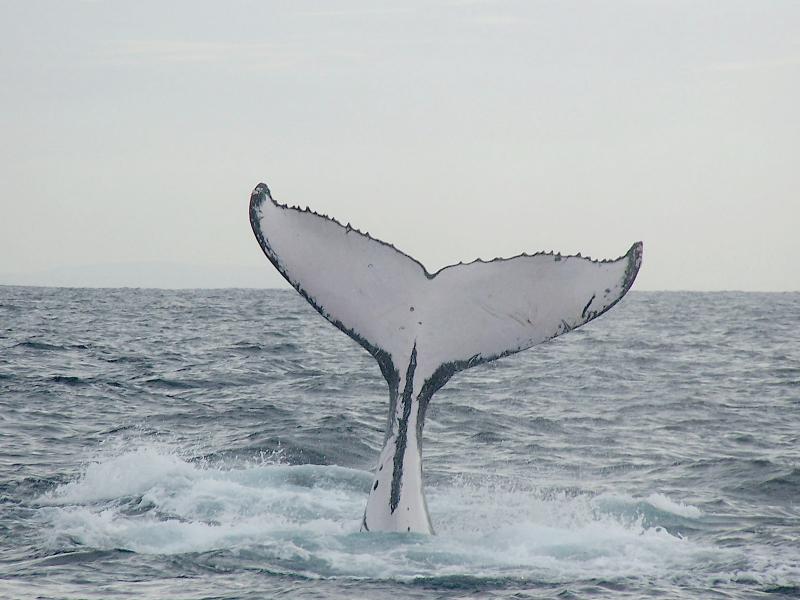The Delaware coastline has had a long history with whales ... or at least the possibility of a healthy whale population. Delaware was actually founded in an attempt by the Dutch to establish a whaling colony back in 1631. They soon realized Delaware was not essentially a “hot spot” for whale activity.
That said, the state is still home to at least 10 species that move far off the coast, and while our appreciation for these breathtaking animals has evolved following centuries of research, there are many that are still in need of humans to change their behaviors in order to survive. A recent finding of beached marine mammals, including whales and dolphins, have ingested microplastics. While it may not have been the direct cause of their strandings, it does demonstrate our addiction to plastics have a wider impact then just easing our ability to tote groceries in a hurry.
Whales and dolphins are closer to humans than many realize. They are found to have “spindle neurons,” in the brain, which allows then to feel more emotions similar to that of humans, such as “empathy, playfulness, stubbornness and sensitivity.”
Scientists are learning more and more about these creatures all the time, and humans have the ability to help them and their habitats with mindful changes to their everyday behavior, such as saying “no” to plastics, banning sonic testing and decreasing carbon output. The more we learn about them, the more we can learn from them. Here are the species found off the Delaware coast and some interesting facts:
Short- and long-finned Pilot Whale: (Population estimate: 780,000 in North Atlantic) The Pilot Whale (which is actually more closely related to the dolphin) can be found throughout the world and will eat small fish, but actually prefer squid. The female short-finned whale has been known to actually go through menopause.
Orca: (Population estimate: 50,000 globally Even though they are categorized as whales, they are actually more closely related to dolphins. They are the only non-human animal on the planet to have evolved with its culture, following a study of whales in the Pacific and Antarctic Oceans.
Sperm Whale: (Population estimate: 300,000 to 450,000 globally) The largest (up to 52 feet) of the toothed whale species, the Sperm Whale are world-class divers, known to hunt for food at depths of up to 3,000 feet.
Pygmy Sperm Whale: (Population estimate: not known, as they actively avoid ships and planes) Not to be confused with its cousin dwarf sperm whale, measuring about 9.5 to 11.5 feet in length, the Pygmy Sperm Whale is the smallest of the whale species and is not much larger than an average dolphin.
Sei Whale: (Population estimate: 8,600 in North Pacific, the only estimate available) The Sei Whale is a baleen whale, which means instead of teeth, it has a system of filters in its mouth that are used to capture food. The bristly system is actually keratin, the same substance that makes up human fingernails and hair. The “Sei” in “Sei Whale” comes from the Norwegian word for Pollock, a type of fish. The Norwegians observed that Sei whales and Pollock arrived in the same areas at the same time every year.
Fin Whale: (Population estimate: 2,700 in North Atlantic) The second-largest whale on the planet (bested only by the Blue Whale), it can reach lengths of up to 85 feet and a weight of 80 tons. Fin Whales tie their cousins the Blue Whales for making the lowest-frequency sounds of any animals.
Minke Whale: (Population estimate: 2,591 in North Atlantic) One of the smaller baleen whales, Minke Whales are known to have over 350 baleen plates on each side of its mouth with baleen bristles attached for filtering their prey from the water. Minke Whales have earned the name “Stinky Minkes” because of the less-than-appealing smell of their spouting.
North Atlantic Right Whale: (Population estimate: not available, but critically low) One of the most critically endangered species of whales on the planet, their numbers this year have decreased even more, with six dying in June of this year alone. While scientists have not determined the deaths of five, at least one had been an elder whale that died from injuries sustained from a ship strike.
Humpback Whale: (Population estimate: most recent estimates are outdated and current attempts cite that they are critically low) Humpbacks are quite the wanderers, migrating farther than any other mammal on Earth. They can travel around 3,000 miles between their breeding and feeding grounds on a regular basis. The males known for their haunting songs, (a complex sequences of moans, howls and cries). And next time you complain that the beach rental next to you is loud, consider that the whale “song” can be heard from up to 20 miles away.
















































